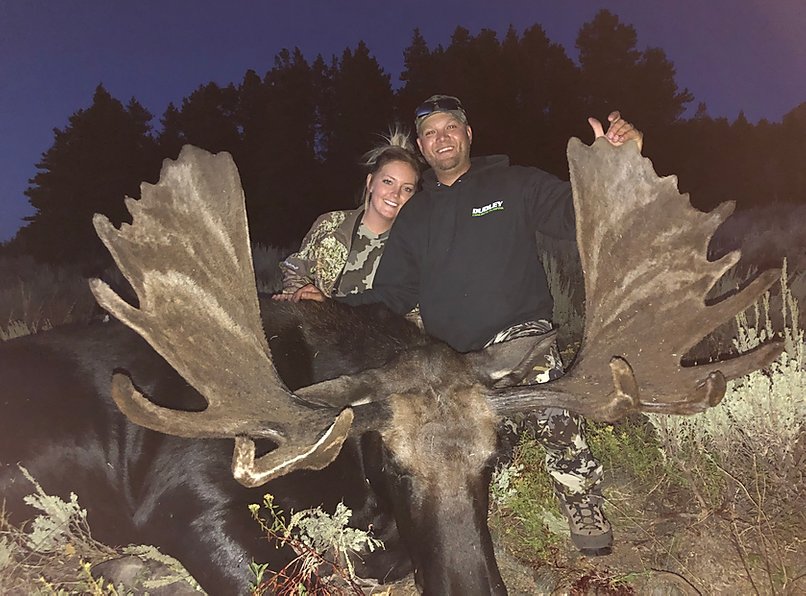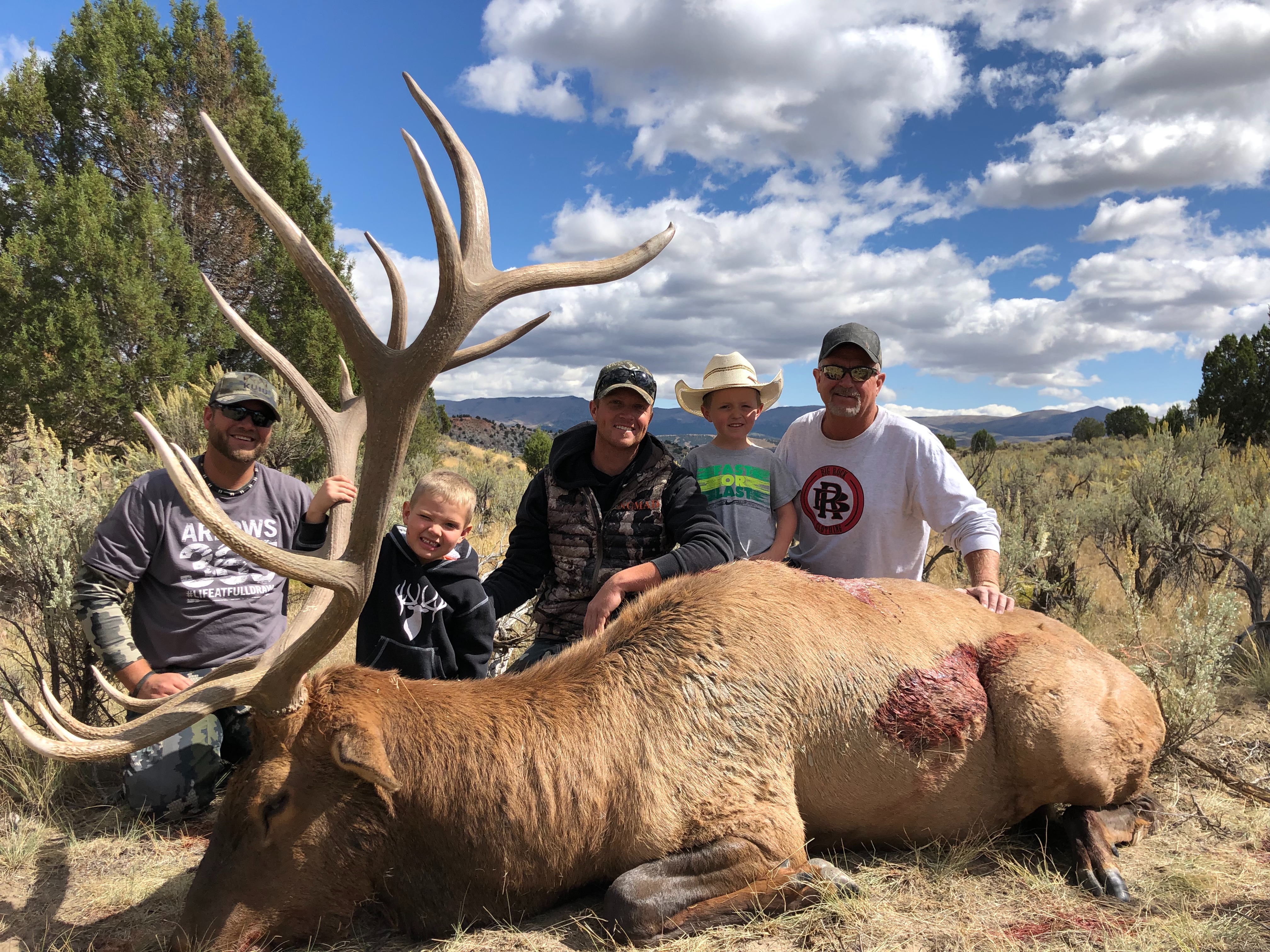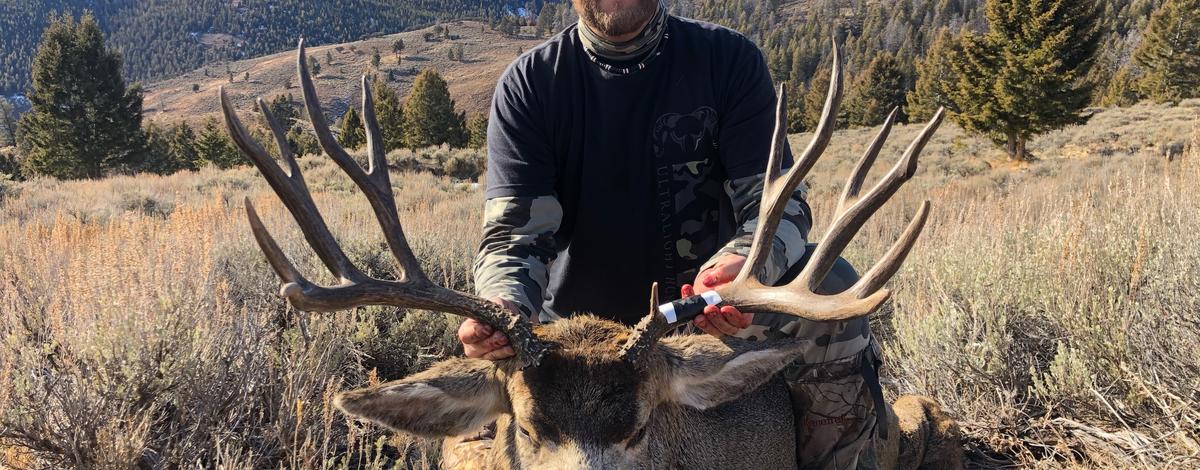It’s time to apply for the first of two drawings for Super Hunt tags, but it's going fast. The deadline to apply is May 31 for the first drawing for Idaho’s best hunts, and Super Hunt tags are available for deer, elk, moose, pronghorn, and one Super Hunt combo, which includes one tag for each of those species.
If you’re not familiar with Super Hunt tags, they allow the tag holder to hunt in any unit open for the species in which the tag is valid. Simply put, a deer tag is good for any deer hunt in the state, general or controlled, and the same for elk, moose and pronghorn tags. Super Hunts are considered “extra” tags, so if you already bought a tag, you can still win a Super Hunt. And, you can buy as many entries as you’d like.
To learn more about them, and buy your chances to win, go to https://idfg.idaho.gov/superhunt.
If those details aren’t tempting enough, here’s a story from one of last year’s Super Hunt Combo winners to give you an idea of what the Super Hunt program has to offer.
Hitting the Super Hunt grand slam
It can be done: one moose, one elk, one pronghorn, and one mule deer — each of them brag worthy — after 44 days in the field from July through the end of November. As one of two Super Hunt Combo winners from a Super Hunt drawing in 2019, Utah resident Chase Ashcroft, 35, had one heck of an Idaho hunting season. And it didn’t cost him much for him to enjoy some of the best hunting of his life.
“I just kind of put in a couple (of entries), what I could afford,” Ashcroft said. “I think (Fish and Game) told me when I drew the Super Hunt Combo that I only had two entries in there, so I spent $40 and got it.”
That’s quite a bargain for what is perhaps the most coveted and dreamed-about hunting experience in Idaho.
“Being able to hunt those low-pressure areas with not many hunters, I don’t think I’ll ever have that experience again — not for those animals in one year, that’s for sure,” he said.
It couldn’t have come at a better time for Ashcroft, who was in a position to take the time away from his concrete business for his hunts.
“I was very lucky. If this would’ve happened to me even five years ago, there is no way I would’ve been able to put the time in that I did. It couldn’t have happened at a better time in my life,” Ashcroft said.
A strong start, with a little help

Ashcroft completed the first leg of his Super Hunt Combo experience on a moose hunt near Twin Falls. While his family owns property in Idaho, and he has hunted elk in the state for the past 10 years, he had never hunted for anything, let alone moose, in Unit 54. So Ashcroft decided it would be in his best interest to enlist some help.
“I ended up booking with an outfitter, who got me a fantastic moose. That was the very first guided hunt I had ever done,” Ashcroft said. “I was a little overwhelmed when I drew the tag, just because I knew I had to focus on four species, and wanted to maximize the situation.”
Ashcroft’s goal was to harvest a nice bull in the velvet with his bow. On the opening morning of the season, the outfitter got Ashcroft on a bull he liked, but they couldn’t quite get close enough for a shot.
“I passed up on a really, really big bull with my bow that morning,” Ashcroft said.
It didn’t take long for him to get his next opportunity. Ashcroft returned to camp and received a tip about a different bull from another guide.
“He showed me a picture, but he said he didn’t think there was any way we would be able to get him with a bow, so I should probably pack my rifle,” Ashcroft said.
Despite setting a goal of harvesting a moose with his bow, plans changed when Ashcroft got a look at the moose in the picture. He packed his rifle, and he and his outfitter headed out to where the bull was spotted earlier in the day. They waited there all afternoon until, about five minutes before dark, the big bull ambled out of the pines right below them at about 375 yards. After a clean shot, Ashcroft had scratched out his moose on the first day of his hunt.
“It almost happened too fast for me,” Ashcroft said. “I wanted to enjoy it, but how do you pass up on a 53-inch moose? One of my goals was that I wanted a moose in the velvet. So I was able to accomplish that.”
Regrets, redemption, and a dream elk hunt

Ashcroft returned to the Twin Falls area for two separate week-long outings during elk season. This time around, it was a do-it-yourself trip, although he was accompanied by some family and friends. According to Ashcroft, they were about the only people in the field. Considering F&G only allocates 20 tags for the controlled hunt in which Ashcroft was participating, that makes sense.
“I think on my archery elk hunt, I only saw one other hunter on that whole hunt,” Ashcroft said.
During the first week, the group came across a monster of a bull, but Ashcroft passed up the opportunity to pursue it.
“I got some good video and passed on him, and I was really kicking myself in the butt when I got home for passing on a 380-class bull,” he said. “When we went back up there, once the rut kicked in, I told myself, if we get another chance at this thing, I’m going to take it.”
When Ashcroft returned with his father, son, brother and a couple good friends, they spent four days hunting hard for the the bull that got away.
Late in the morning on the fourth day, the group was set up on a ridge glassing for Ashcroft’s bull, and his brother finally spotted it bedded down in the distance. Ashcroft was a little skeptical, figuring it would be tough to pull a bull out of its bed in the middle of the day, but the group ultimately decided to put on a stalk at about 11 a.m.
“When we turned him up again, it all came together just like a dream. We lucked out: he didn’t have any cows with him, and he was hitting the rut just perfect,” Ashcroft said.
He and two other members of the group — one cameraman and one caller — dropped down from the ridge, set up, and started calling to the bull.
“It took about 45 minutes before he answered us back. And then once he answered, he didn’t stop,” Ashcroft said. “He ended up coming in at the most perfect spot, 37 yards, stopped and bugled, and I let him have it right there. He went maybe 75 yards and ended up in the bottom of the ravine. Everything about it, it’s what you dream of when you’re hunting elk.”
Settling on a pronghorn

Just a week after he harvested his elk, Ashcroft turned his attention to filling his antelope tag, with a goal of harvesting an 80-inch plus buck.
“I had found one good pronghorn down on the Unit I killed my elk on, but he just wasn’t great,” Ashcroft said. “So I focused on a different unit and found a really, really big pronghorn, and I just could not get him.”
After a few fruitless weekend trips, Ashcroft traveled to Idaho alone.
“I ended up going up on a Tuesday by myself. I couldn’t get any family or friends to go in the middle of the week, and my work schedule worked out to where I could leave.” he said. “I found him the night I got up there, and went in to hunt him the next morning.”
Ashcroft got an early start and hiked in four miles before seeing the pronghorn again. There was only one problem — the big buck was well out of Ashcroft’s rifle range, with no easy way to get closer. As he glassed the herd carefully and considered his options, he noticed a new pronghorn in the group that he hadn’t seen before.
“They were in a group of 30. Six of the bucks I already knew, but this new one I didn’t,” he said.
It wasn’t quite as big as the one Ashcroft had been pursuing, but it looked like a quality buck and was within a shooting distance Ashcroft was comfortable with.
After spending three weekends and a couple of weekdays chasing his preferred pronghorn, he had a decision to make: should he continue to chase the biggest buck of the bunch, or “settle” for a slightly smaller one?
Ashcroft opted for the latter. The pronghorn was the biggest Ashcroft has ever harvested, and scored just shy of 79 points. Not bad for a consolation prize.
“He wasn’t quite as big as the one I was after,” he said. “But I was at the point that I was done hunting antelope and ready to move on to hunting my deer, and I knew this new antelope was still a good one, and it was about 400 yards closer and a legitimate shot. It was just incredible to be all alone up there and to get it done.”
Finishing strong with a monster mule deer

Of all the four species he hunted with his Super Hunt Combo, Ashcroft spent the most time and effort on his mule deer, and he had no intention to settle.
“The mule deer I actually hit really hard. I did a lot of summer scouting, and most of my focus was on mule deer up in Units 40, 44, and 45. I spent a ton of time up there, and actually hunted up there with my bow a little bit in early August,” he said.
All of his preparation before the season, however, was geared toward the rifle season.
“The first hunt I went on was that Unit 45 hunt at the end of October,” Ashcroft said. “I took seven days off work and went up there towards the end of that hunt. We hunted hard, and I saw some really nice deer that I would shoot any day of the week with any other tag. My dad was with me, and he couldn’t believe we were passing on the caliber of bucks we were passing on.”
After that season closed without Ashcroft finding his deer, he focused his attention to the late-season rifle hunts in November.
“We went up towards Challis and spent nine days up there in 36-B,” he said. “I found my buck about five days in, and every time I’d find him, I could glass him from about 2.5 to 3 miles away, but by the time I could hike there, he wouldn’t show up in the evening. He was off and on, and we weren’t seeing him every single day.”
On day seven, Ashcroft and his dad were supposed to be headed home, but he called his wife and said he was thinking about staying up in the mountains for a few more days.
“She just told me, ‘If you like him, just stay up there and get him because it’s gonna end soon,’” he said.
So Ashcroft did, and woke up at around 4 a.m. the next morning, hiked three miles in the dark and set up where he last saw his buck before sunrise.
“When the light came up, there was just deer everywhere, and I’m scrambling with my spotting scope, checking them all out,” he said. “I finally find him, I settle in, and I get him ranged at like 550 yards, and I know I’m good at that shot. So I lay down, rip one off at him and miss over the top of his back.”
Ashcroft got back on his spotting scope, found the buck again, confirmed he had missed and realized he was going to have another chance.
“I settled down, and he actually come a little bit closer,” he said. “I shoot, and it sounded like I hit him, but with the recoil of my gun I can’t see him anywhere. I get back on my spotting scope and he’s nowhere to be found.”
Ashcroft gave it about an hour before he hiked the 500 yards to where he thought he shot the deer, set his backpack down, and began scouring the mountain for any sign of his buck. He searched for over an hour and found no sign of the deer.
“Nothing. I don’t know what happened, or how I could’ve missed twice, and I started second-guessing myself,” Ashcroft said. “So I decide I’m going to go grab my pack and head to the top of the ridge and check the treeline for blood, because that’s where the majority of the deer took off toward.”
When he got back down to where he left his pack, his beautiful six-by-six mule deer buck was sitting no more than 12 feet from it.
“He was laying right there the whole time, and I spent about two hours looking for him,” Ashcroft said with a chuckle, explaining he must have been too focused on finding a blood trail, “but he just dropped in his tracks.”
It ended up being the biggest mule deer buck Ashcroft had ever harvested by a large margin, scoring 188 3/8 points with a 32 inch spread.
“I got what I wanted out of that hunt: I wanted to be able to hunt them in the rut without anyone else around, and I shot him with five or six days left in the season, so I maximized my hunting opportunity, and I couldn’t be happier with the buck I harvested.”

